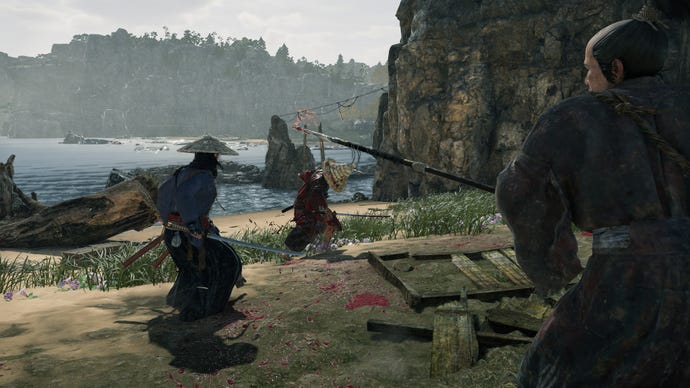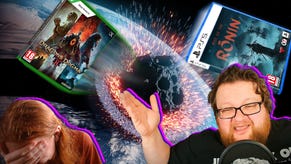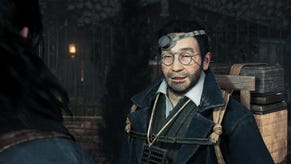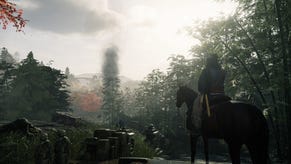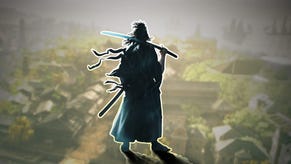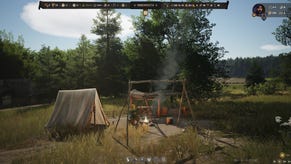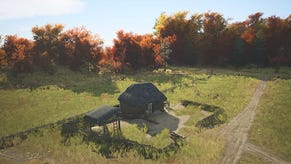17 things I wish I knew before starting Rise of the Ronin
Rise of the Ronin is Team Ninja’s most accessible action game yet, but it still manages to hide a lot of mechanics that evolved from the Nioh games.
Rise of the Ronin is a Team Ninja game, so there’s really no getting around the fact you can expect a deep layer of complexity here. The game oscillates between not doing a good job at exposing that depth, and not properly explaining it.
That said, Ronin is, without question, also the studio’s most accessible game ever, so you definitely shouldn’t write it off if you happen to know a thing or two about the difficulty of the Team Ninja’s games.
In these tips, we’re going to go over several major points that will help you get a better sense of how Ronin works, and expose you to some of the more interesting - but less obvious - ways it works. Everyone; from Nioh pros to Team Ninja first-timers will find something to chew on here, so let’s dive deep into it.
Don’t worry too much about your starting weapon (Blade Sharpening Origin)
Rise of the Ronin starts off by offering you the choice of weapon. Like the Nioh games, you’re asked to pick your main weapon and another optional one you can switch to in combat. The game tries to push you towards picking two that compliment one of the major stats, but you can ignore that and pick what you like.
For one, stats and levelling up work differently in Ronin compared to Nioh. While you could pick the two that are most aligned with your chosen stat, you’ll quickly find that it’s a bit pointless, as you’re going to be investing in the different stats almost equally as you play. For instance, while you may primarily focus on the Strength tree for more HP, it’s very likely you’ll also invest some points into unlocking and improving the shuriken in the Dexterity tree, or opening up more conversation options in the Charm tree.
Indeed, as you’re going to later discover, many of the weapons - regardless of their class - come with stat boosts that exist independently of your own skill point investments.
In short, pick the weapons you’re comfortable with/think are cool, and don’t worry too much about their stat alignment. It’s also worth noting that switching weapons can be demanding in combat, especially since Ronin’s gameplay relies on a lot of button modifiers. By that we mean, you may forget you have a second melee weapon equipped at all, which is even less of a reason to worry about having everything aligned with a main stat.
Veiled Edge Banner is your bonfire, but there’s a catch
Someone should create a glossary that tracks every different name games with Soulslike elements give bonfires. You know, the checkpoints you activate when you reach them in the open world. In Rise of the Ronin, those are called Veiled Edge Banners.
As expected, when you activate one, you fully heal up, and all your healing items and consumables get refilled (assuming you have enough in your storage). This also means most enemies in the world will respawn.
The big thing to note here, however, is that there is only one way of interacting with them. Whereas other Soulslikes separate activation from resting/sitting, Ronin does not. In other words, if you hit that button, you’re going to get all the benefits and drawbacks of sitting at a bonfire.
Veiled Edge Banners work slightly differently in Battle Missions - the closed-off, more linear missions where you get to pick allies to accompany you. They still act as checkpoints, but since enemy spawns are limited in those missions, touching them only really marks your path, and where you’re going to respawn if you die - but does not respawn enemies as it would in the open world. You should still trigger any you come across in missions regardless, if only to refill your healing items and bullets.
Look up! No, seriously
If you’re coming off the Nioh games, you may be surprised to see just how much verticality there is in Rise of the Ronin. The game borrows from Sekiro: Shadows Die Twice a lot in that area, which is further emphasised by your always-equipped grappling rope. It lets you grapple onto premade points to reach rooftops and various elevated areas you may not immediately realise can be accessible.
The game doesn't always do a good job of alerting you that you’re near one, so make a habit of angling your camera upwards to see if there’s a different angle of approach available that you may not have considered. The grappling rope can, of course, also be used to pull enemies towards you, or pick up and throw environmental objects - such as exploding barrels - at them.
It’s not as smooth as the one in Sekiro, sadly, and won’t always hook into anchoring points when you expect it to mid-flight. Sometimes, you may have to carefully line it up before pulling the trigger, something Sekiro handled much better. Just make sure to be looking at the one you want to interact with and don’t just count on the game figuring it out for you.
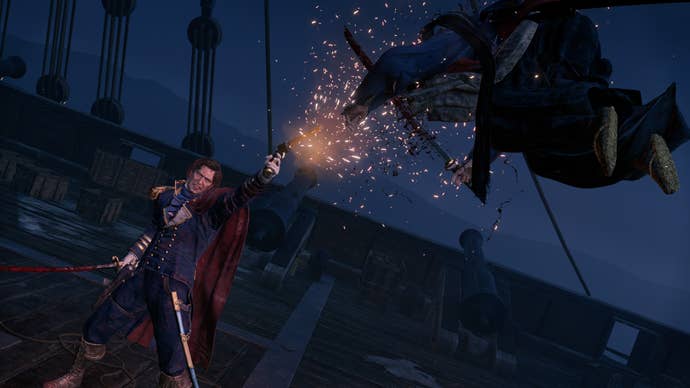
You don’t have to worry about armour weight
The loot and armour system in Rise of the Ronin owes a lot to Nioh and Wo Long: Fallen Dynasty, but it’s a much more simplified version of the ones found in those games. The result is that picking the right piece of armour will be much less of a hassle.
Armour stats do exist, and loot levels haven’t gone anywhere. Indeed, certain sets drop with unique skills that will have you comparing and contrasting, rather than just equipping the one with the bigger number. But you’ll be happy to learn there is no such thing as character/equipment load, meaning armour pieces do not have weight.
This also means there are no armour classes (light, medium etc.) which further simplifies the process of picking the most suitable piece of gear. Setting aside the higher level or better rarity, you should always look for skills that complement your play style. For instance, if you never use the bow, it doesn’t make sense to equip a set with archery bonuses - unless it happens to be your highest-level at that moment. Just remember to move to something that better matches your style later when it’s level-appropriate.
Turn on auto crouch, auto pick up, auto ladder and rope-grabbing
Rise of the Ronin comes with a range of quality of life tweaks out of the gate that take some other open-world games time to implement. A few of the most common tasks in the game can be automated, such as removing the need to use a button to pick up the many, many materials you’re going to come across in the open world.
The option also affects pretty much anything that requires picking up, such as pouches and other bits of loot found in towns/homes, or on enemy dead bodies. There’s also an option to automatically stick to ladders when you get close enough to one, and automatically catch dangling ropes (useful for platforming). The two are tied to the same option, which can admittedly cause some trouble if you happen to be near a ladder in combat, as your character will ignore the fight to try and climb it, which is awkward at best and frustrating at worst.
If you do turn it on, just be mindful that this could happen, so you may want to stay away from ladders while you fight off enemies. To turn on either of the two options, simply head to the Options menu > System > User Accessibility > Control Assist and turn whichever ones you like on/off.
Focus on reducing enemy stamina (Ki), not their HP
Much like the Nioh games, the core loop of combat in Rise of the Ronin revolves around preventing the enemy from being able to attack, rather than simply reducing their HP to zero. By landing consecutive hits, making regular use of Martial Skills, as well as pulling off Countersparks (parries), you’ll see that your opponent’s stamina (Ki) bar gets shorter and shorter.
Reducing that upper limit not only means they won’t be able to attack you as often, it also makes them much easier to stagger, which is your opportunity to land a critical hit and deal massive damage. This is signified by the lock-on icon turning red. You can even be cheeky and land a couple of normal hits before you hit Triangle to execute a critical strike, just for that extra bit of damage.
While you certainly can play the back-and-forth game of landing a hit or two and retreating to block/dodge, it’s going to take you much longer to fell an enemy that way. Focus instead on Countersparks and keeping the pressure on to lower your enemy’s stamina, which will make encounters a lot more manageable.

Mastering the Blade Flash helps you stay on the offensive
Nioh’s fantastic Ki Pulse mechanic - which is basically Gears of War’s active reload - sort of returns in Rise of the Ronin. It’s called Blade Flash, and it’s a move that lets your character flick their weapon to get rid of the blood covering it. While it does bring back the blade’s sheen, that’s not why you’d want to do it.
Blade Flashing restores some of the lost stamina (Ki) used to deliver the attack. Think of it as actively reloading your stamina. Get in the habit of doing it after every combo; simply click R1 quickly after your last button press. The timing is much tighter than Nioh for some reason, but the good news is that it’s more prone to mashing, so once you get in the groove of things, you’ll be able to easily pull it off.
Blade Flashing can be done after every attack, if you like, but it may sometimes prove useful to wait until the Blood Gauge - signified by the orange bar under your weapon icon on the right side of the screen - is full. In some cases, depending on the weapon and the skills you may have specced into, doing it on a full gauge offers certain buffs.
Certain builds will, as a result, have more to gain from proper use of the Blade Flash than others, but everyone should nevertheless incorporate it into their repertoire for an easy bonus.
Karma is worthless if it’s not banked
In Rise of the Ronin, Karma is basically your Souls. That is to say, it’s the currency you lose upon death. To get it back, you need to return to your site of death, or land a critical hit on the enemy who killed you. This is all pretty straightforward, but what you may not realise is that simply having a certain amount of Karma doesn’t mean it can contribute to your character just yet.
Without banking it, it’s going to be lost before you can make use of it to build up your character. This can more easily be done at any Veiled Edge Banner (bonfire), but it’s also automatically done when you finish a mission.
It’s a little similar to the way Sekiro did it, and it may be confusing at first to see that the Karma you’ve been gaining hasn’t been ending up as usable stats. If you’re worried about dying and losing the Karma you have on you, simply check the menu; if you see a small upward arrow next to the bar, you’ll know you have more than enough to level up, so head to the nearest Banner and bank it.
Loot up after restoring Public Order
After you settle into the Rise of the Ronin open-world groove of liberating outposts restoring Public Order, you’ll be well on your way to getting every area to 100% completion. Unlike the modern Far Cry games, however, you don’t get to choose when to plant your flag and declare the area liberated.
Once the last enemy has been killed, the game automatically cuts to a cutscene that shows people returning to the town, and resets your location. This can be very disorienting, as you’re going to lose where you were before it happened.
Nevertheless, once Public Order has been restored, be sure to go back and check every building for any loot you might have missed. This could be as simple as those sacks on house floors or hidden in attics, all the way to chests big and small. Sometimes, the more difficult areas will have a boss that drops a key when killed, which is the only way to unlock a nearby stash full of loot.
Many times, too, enemy bodies will have items on them you can pilfer. All of that is to say: don’t immediately run off once all bandits have been dealt with, and take a couple of minutes to go back and see if you missed anything before moving on.
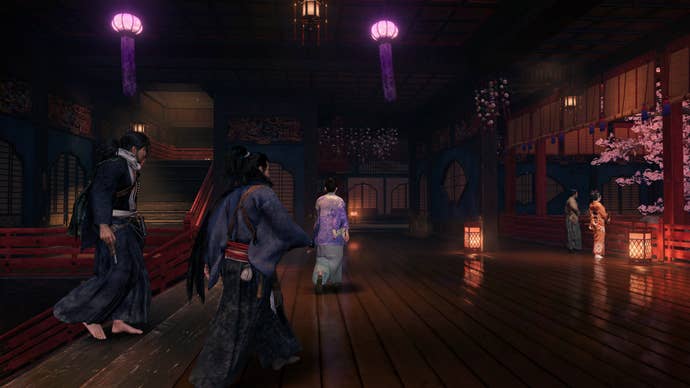
If you want to be stealthy, invest in Dexterity
As pointed out many times in this guide, there’s a lot of Far Cry and Assassin’s Creed in Rise of the Ronin. Stealth takedowns are just one of the many ways this can manifest. But not all of those skills are immediately available to every player.
If you like to take your time, sneak around and make use of every available silent tool at your disposal, prioritise the Dexterity tree. This is basically your shinobi path in Ronin, with such abilities as multi-target takedowns, pulling enemies towards you for stealth assassinations, quieter footstep sounds, making yourself harder to detect and everything else you’d expect from a similar path in other games.
Do keep in mind, however, that while you’re going to have plenty of leftover points to invest into other trees, going too hard down the Dexterity tree will make you a little less effective in one-on-one combat, for obvious reasons. That said, that path has its own clever bits of kit that can make it easier to take down bosses - like shurikens - just not in the most straightforward of ways.
Not all of the (same) merchant type have the same stock
In most open-world games, we’ve been trained to ignore merchants of the same type in the same general area. Generally, they all sell the same items, and have the same timer for stock refresh. In Rise of the Ronin however, two of the same merchant type in the same town could have quite different stocks.
This is especially true when one is close to a Faction Base you have a stronger bond with, compared to the other up the street who’s more of the area’s general supplier. The Apothecary is the most common trader you’re going to come across, so take a moment to peruse the wares of every one of them, you may just find they have the material you need for upgrades or a piece of equipment you’ve been looking for.
It’s also worth paying attention to the discount alert, visible when hovering over a merchant icon on the big map. The reason for the discount varies, depending on area clearance, your bond with any given camp etc. You can also invest in the Charm tree to get better prices when buying and selling, if you really want your money to go even further.
You replenish HP and Ki out of combat, but only in the open world
Team Ninja has made the merciful decision of allowing players to replenish the two most used fighting resources in Rise of the Ronin out of combat automatically, those being HP and stamina (Ki). This happens automatically in the open world. And, as a bonus, you don’t even consume stamina when you run around the world (except when using the glider).
However, these rules do not apply in combat. If you get into a fight, defeat all enemies you can find and still see that you’re not automatically replenishing HP and Ki, you can be sure that there’s an enemy around somewhere you missed who’s keeping you in this combat state.
Sometimes the music would settle, indicating that the combat encounter is over, when in reality that last enemy is still alive somewhere and preventing you from returning to the neutral state where you can freely replenish both. When this happens, you’re likely to find them squatting down somewhere rummaging through something, which - thanks to the game’s colour palette - can make them blend into the environment a little too well sometimes.
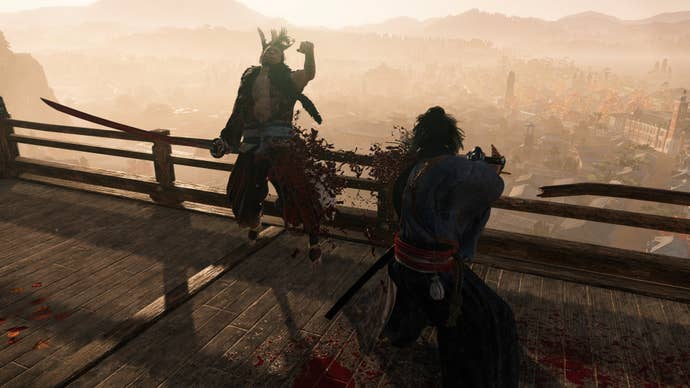
There’s usually something worthwhile hidden at most towers and pagodas
As you explore the world of Rise of the Ronin, you’ll come across various pagodas, towers and tall structures of various descriptions. They may seem like part of the scenery at first, but more often than not, they can be interacted with. Sometimes the front door is locked, which is a good sign that you can enter from a different angle to unlock it, and access a nice chest in the process.
Other times, you’ll find a dangling rope that’s just out of reach, which means you’ll have to find a way to reach it so you can take it all the way to the top. These buildings hide loot of varying qualities, Veiled Edge Banners, and sometimes the cats you’re supposed to be collecting.
If you see any of them, take a moment to figure out the puzzle and reach the top or find a way to unlock whatever is locked within.
Don’t sell your Yellow Lotus for Karma
The Yellow Lotus is one of many consumable items you’re going to find in Rise of the Ronin. They reward Karma when consumed, but unlike most Soulslikes, selling them to merchants does not simply achieve the same goal. For some reason, if you sell a Yellow Lotus, you’re going to get money instead of Karma.
We don’t know why that’s the case, so it’s best to either leave them or use them when you need just a bit more Karma to level up - just do not sell them to merchants. Karma is more valuable than coins in Ronin, and those Yellow Lotuses can come in handy in the late game.
Talk to your allies often
Building up a crew of NPC friends is one of the main mechanics in Rise of the Ronin. Not only can you call upon them in Battle Missions, nurturing that relationship nets you a whole host of rewards, including new combat styles and proficiency boosts to your favourite weapons.
Indeed, they may even offer new information on existing story events, or have quests of their own, sort of like loyalty missions. For any of that to happen, however, you need to make sure your bond with them is always growing.
This can be easily done by giving them gifts. When you talk to each character, you’re going to quickly find out their likes and passions, which in turn helps you gift them the right items. While we still recommend taking the time to chat, you can simply give them a gift with the white heart on it, which denotes they’re going to like it. Some gifts will be appreciated by everyone, but most are designed for certain NPCs.
Talking to your crew, whether at your Longhouse, camps or really any chance you get, also grows that bond and unlocks more dialogue options, if you’re eager to learn more about them. Taking them on Battle Missions also further strengths these bonds.
In fact, depending on their weapon and class, they could bring some serious boosts to your attack power and available combat options within a given mission. And, since you can switch to any of them while playing, keeping them happy is effectively like investing into alternate characters, so keep growing those bonds.
Training at Dojos is a good way to grow weapon proficiency, combat styles and learn new Martial Skills
On the subject of growing things, a good way to boost your own weapon proficiency, unlock more moves, Martial Skills and even learn new Combat Styles is to train at Dojos. You can pick your opponent from a pool of all your allies.
And, since they each often have their own styles and preferred weapon, training against them is a great way to boost up weapons you may not necessarily always use, not to mention see what they can do in combat, should you want to try them out at some point down the line.
At the very least, you should fight every ally once. The first fight usually has a bunch of rewards associated with it, which you can see when you visit the Dojo and pick an opponent to spar with. The more you fight, the better the rewards. All rewards are visible from the off, too, so if you spot something you like, try and get better at fighting this or that ally to earn what they have to offer.
Sparring with your mates also further grows your bond with them, so everyone benefits.
Try to equip one of each of the three types of Combat Styles on your weapon for maximum compatibility - Jin = mid, Chi = low, Ten = high
Rise of the Ronin doesn’t quite have the stance system from Nioh, but it does have a more accessible version of it. Each Combat Style - which you can switch between by holding R1 and moving the right stick - offers advantages and disadvantages against the various enemies you’re going to encounter.
A simple glance at that screen will either show a neutral grey colour, a red arrow pointing down, or green arrow pointing up. This basically indicates which style offers bonus damage against whatever enemy you’re currently facing. The same information is also visible on their HP bar.
When equipping Combat Styles (once you have more of them than empty slots), try and have each of the three types represented. Jin is your mid stance, Chi is low, and Ten is high. By keeping a diverse set of them equipped, you greatly improve your chances of having one that does more damage to the boss/enemy than the rest.
Of course, even if you have all your bases covered, certain enemies still won’t care, which likely means your chosen weapon is the reason. When that happens, don’t sweat it, because even a neutral Combat Style can still take down an enemy - it may just take you longer to do it.
